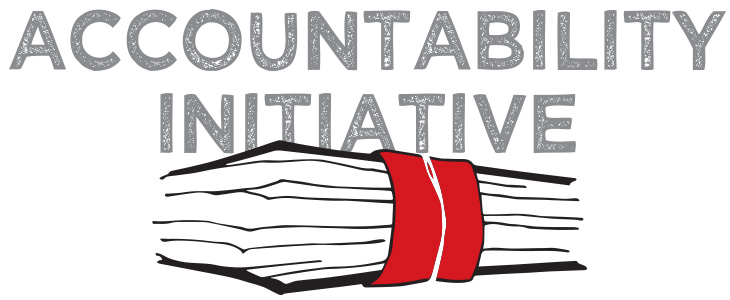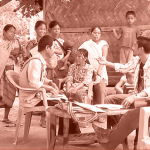
Understanding Local Dynamics and Tracking Fraud/Corruption in NREGS
28 February 2012
In a previous blog post, Yamini talked about the study on social audits[i]. It was for this study that I was in Andhra Pradesh from 5th Feb to 18th Feb. The study aims to analyse the efficacy of the social audits as a platform to capture the universe of complaints and whether it leads to effective grievance redressal.
We were a team of 12; 10 enumerators and 2 supervisors. We had to interview 4 categories of wage seekers from 8 villages. The four categories were
1 – Random wage seeker[ii],
2 – Wage seeker who attended a village/ mandal level social audit meeting,
3 – Wage seekers who worked at a fraudulent worksite, i.e., a worksite where monetary irregularities like inflated material records or work not completed but shown a completed in records or inflated measurement records have been identified during the social audits.
4 – Wage seekers whose names appear in the social audit reports.
My main purpose during the survey was to understand the local dynamics in a village and track frauds, i.e., understand how corruption occurs and identify the various ‘actors’ involved in it. Understanding the local village dynamics would help us in analyzing whether the social audits have been able to capture the universe of complaints and tracking frauds would give us a background context when looking at the grievance redressal system.
For understanding the local dynamics in a village, my strategy (if you can call it one) was to talk to different communities in the village. Caste dynamics, I found, played a major role in the allocation of work and (timely) payment of wages. If the Field Assistant (FA), an Employment guarantee scheme (EGS) staff who is responsible for allocating and supervising work at the village level, was from the OBC community then the non-OBC community wage seekers had a string of complaints regarding wages not being paid, work not being allocated, corruption etc against the FA. And, if the FA was from the SC community then the non SC community had complaints against the FA.
In my quest for understanding the dynamics of the village I came across an interesting aspect with respect to providing work. In Andhra Pradesh work is allocated to groups; if one wants to work under NREGS, he/she has to be part of a group. A group can be formed with a minimum of 5 members and has an upper limit of 30 members. There are two types of groups, the Shrama Shakti Sangam (SSS)[iii] groups and ‘temporary groups’. A SSS group membership is fixed. Anyone one not included in the SSS group will be added to the ‘temporary group’. The temporary group is flexible about changes within a group.
So how does this affect one’s chances of getting work? Work is allocated to a group only if the group has the capacity to complete the work. For example, in ‘silt work’ you need about 5-6 people to unearth soil, 3 people to load the soil onto a tractor and another 3 people to offload the soil from the tractor. So on the whole, the group should have at least 11-12 members to complete the assigned task. Group dynamics affects the number of people willing to work together. Problems are further escalated if the groups have been formed without consulting the wage seekers, especially if it is a SSS group. Ideally the groups, both SSS or temporary groups, must be formed only after consulting the wage seekers Thus the availability of group member willing to work together determines whether a group gets work or not.
My second goal of tracking frauds proved to be quite a challenge. The EGS staff was always on their guard when we talked to them as they thought that we were from the government doing an evaluation. But the advantage of this was that they did not refuse to talk to us. However, towards the end, we did catch a break with an FA who was candid enough to share his knowledge about fraud in NREGS.
The two most common types of fraud/complaints cutting across the villages we’ve surveyed were “benami names” and inflated records. “Benami names” is the term used to represent ghost workers, i.e., a wage seeker who is not working under NREGS but has been marked as ‘present’ (worked) in the muster roll/records. The wage seekers are pretty vocal about pointing out benami names during the social audit, though they will not say who is responsible for it. The general feeling among the wage seekers is “If I have worked so hard that the skin on my palm has ruptured, why should you get wages without working?”
With respect to inflated records, the most common complaint was the inflated number of tractor trips used for transporting soil. Soil is used to make the farm land fertile and it’s applied before the rains. De-jure, 2.5 cubic meters should be transported per trip. But to save fuel costs, tractor owners load more than the prescribed limit. So the basic estimation of ‘so many trips for so much soil’ does not hold. One way misappropriation happens is that the FA/TA may still use the 2.5 cubic meters per trip even though the tractor owner took fewer trips. And, from the ATR[iv] reports, most of the tractor owners are not concerned about the additional money drawn using their name. When I enquired about this type of misappropriation, the FAs maintained that the village social auditors do not verify the facts correctly and that the tractor owner or farmer might have forgotten the number of trips by the time the social audit is conducted.
Then, there are few unwritten rules followed at the village level for allocating soil to farmers which makes it difficult to track misappropriation during the social audits. If the farmer for whom soil has been sanctioned does not require it, he can give his share to another farmer, through either a written or an oral statement to the FA. In some cases the sarpanch/panchayat orders the FA to give soil to an unsanctioned farmer.
Apart from caste dynamics, local politics influences the implementation of NREGS. Due to local political interference, many of the villages we visited did not have a village level social audit meeting during round 2 and round 3 social audits. The social audit staff I spoke said that when there is a threat from the local influential/political people in the village, they don’t conduct the village level audit meeting or they conduct the village level audit meeting but don’t read out all the complaints.
These issues however have been addressed in the 4th round of the survey. From the 4th round onwards, the Mandal Revenue Officer (MRO) is mandated take part in the village level social audit meeting as an independent observer. This means that there would be added security at the village level audit meeting and the presence of a higher official at the audit meeting gives a sense of security to the audit team. The presence of the MRO also increases the probability of issues getting resolved at the village audit meeting.
Another new feature that would strengthen the social audit process is the introduction of ‘Mobile Courts’. Based on the quantum of misappropriation, mobile courts would be available at selected villages after the mandal level public meeting. The main purpose of the mobile courts is to facilitate the follow up of the complaints registered at the village and mandal level social audit meetings.
On the whole, the EGS staffs are of the opinion that Social audits have a positive impact. Because of social audits there is a fear among the EGS staff of being embarrassed in front of the village if involved in corruption/fraud. Though they have complaints against round 2 and round 3 social audits, they feel that
[i] Click here for more information about social audits
[ii] Beneficiaries of NREGS.
[iii] Shrama Shakti Sangam, a Self help group of 20 to 30 members formed by the government of AP
[iv] Action Taken Report; a report stating the action to be taken on various complaints as decided in the
mandal level social audit meeting





